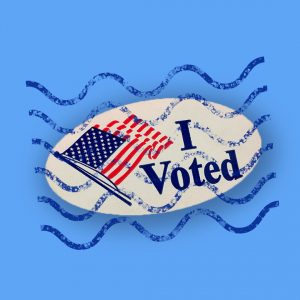Politics dictionary
line warming
line-warming [ lahyn warm-ing ]
What is line warming?
Line warming is an informal term for the practice of providing things like water and food to people waiting in line to vote in an election. The practice is sometimes also called line relief.
Those who engage in the practice typically do so with the intent of making things more comfortable for voters who must wait in line for long periods of time.
The practice and the term for it gained national attention in the US in 2020. After the 2020 presidential election, many Republicans criticized the practice (particularly as it occurred in the state of Georgia) as being a violation of the federal law that makes it illegal to provide or receive any sort of gift or compensation as part of an attempt to convince a person to vote or to influence their vote. Additional legislation was adopted or introduced by Republican lawmakers in some places to explicitly prohibit the practice.
Critics of laws prohibiting the practice often argue that they are motivated by the desire to limit voting as much as possible. These critics argue that the long lines that make line warming necessary are themselves the result of attempts to limit voting by limiting the number of available polling places and through other means.
Where does line warming come from?

In the term line warming, the word line simply refers to a line of people waiting to vote. The word warming refers to the act of making things more comfortable for such people. This most commonly consists of providing bottled water and food, such as pizza, to people who must wait very long periods of time to cast a vote.
Though the practice is not new, the term line warming first gained widespread awareness in the aftermath of the 2020 US presidential election. Much of the focus on the practice was centered on the city of Atlanta, which experienced high turnout and very long lines at polling places. At the time, The Atlanta Journal Constitution newspaper used the term line warming to refer to the practice of providing refreshments to voters, which it referred to as existing in “a legal gray area.”
After the election, Georgia lawmakers passed a controversial law that banned line warming, claiming that it was being done in an effort to influence voters. In response, many voting rights organizations and activists alleged that such laws serve to discourage voters as part of a wider effort by Republicans to generally suppress voting, especially in cities and among People of Color.
The Georgia ban was challenged prior to the 2022 midterm elections, but a federal judge kept the ban in place.
Examples of line warming
Who uses line warming?
The term line warming is often used in the context of voting rights and legislation. Laws passed to ban line warming are often criticized as being a form of voter suppression.
A federal judge in Georgia decided late Thursday to uphold a ridiculous ban on distributing food and water to voters standing in line—a practice often referred to as “line warming” or “line relief”—on Election Day.
— THE DEMOCRAT (@ocasiod88) August 28, 2022
Six sections of Georgia’s contentious election bill go into effect today, restricting absentee ballot voting by adding ID requirements and limiting drop boxes, banning line warming, and allowing the state to take over local boards of elections.
— Rep. Carolyn Bourdeaux (@RepBourdeaux) July 1, 2021
How do federal voting rights protect Georgia?
✅ Preserves secure drop boxes
✅ Prohibits criminalization of line warming
✅ Places restrictions on removal of local election officials
✅ Ends “use it or lose it” purges
✅ Ends partisan gerrymandering
✅ And A LOT MORE!
— Bee Nguyen 🐝 (@BeeForGeorgia) January 19, 2022
Note
This is not meant to be a formal definition of line warming like most terms we define on Dictionary.com, but is rather an informal word summary that hopefully touches upon the key aspects of the meaning and usage of line warming that will help our users expand their word mastery.